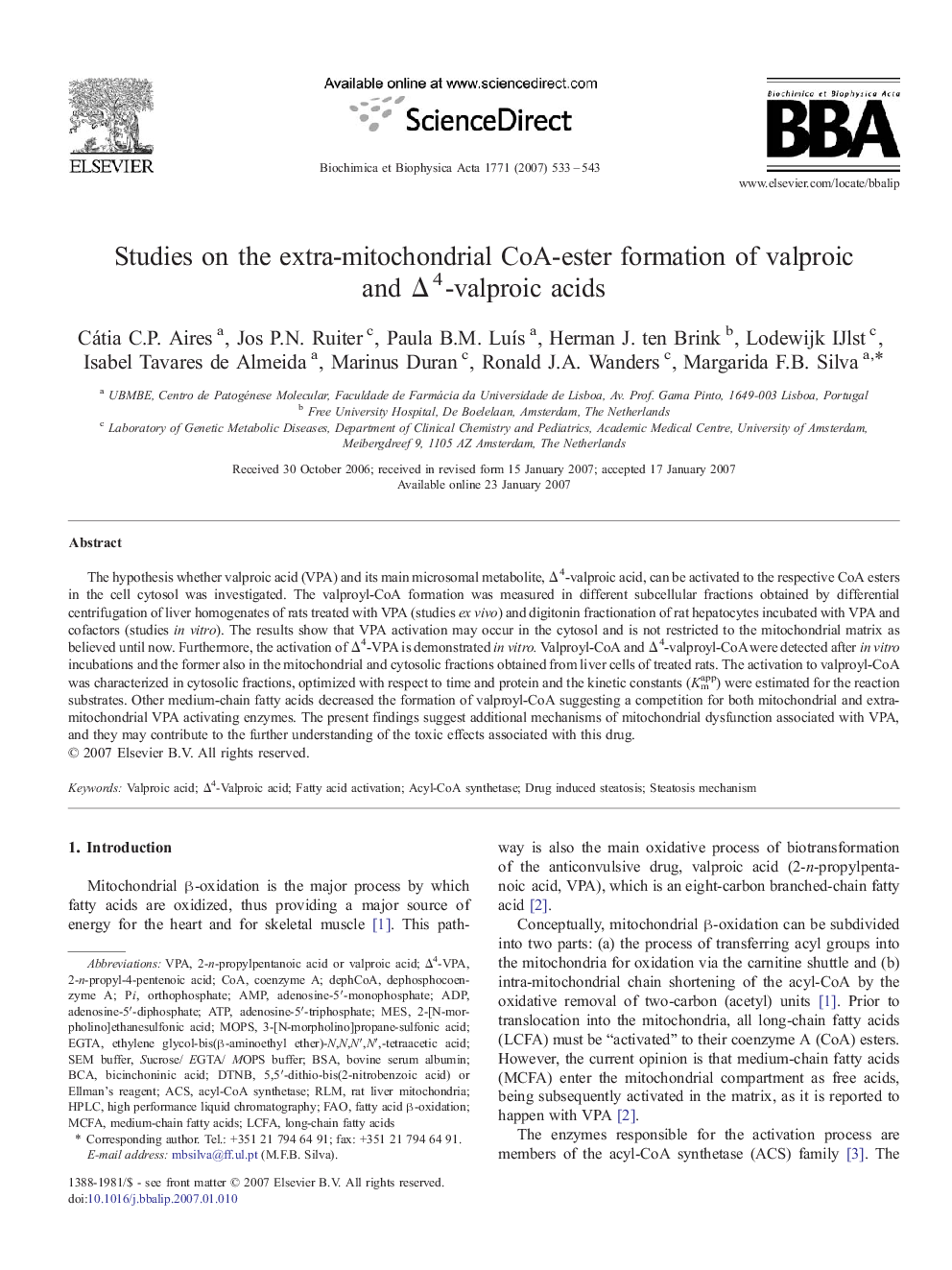| Article ID | Journal | Published Year | Pages | File Type |
|---|---|---|---|---|
| 1950090 | Biochimica et Biophysica Acta (BBA) - Molecular and Cell Biology of Lipids | 2007 | 11 Pages |
The hypothesis whether valproic acid (VPA) and its main microsomal metabolite, Δ4-valproic acid, can be activated to the respective CoA esters in the cell cytosol was investigated. The valproyl-CoA formation was measured in different subcellular fractions obtained by differential centrifugation of liver homogenates of rats treated with VPA (studies ex vivo) and digitonin fractionation of rat hepatocytes incubated with VPA and cofactors (studies in vitro). The results show that VPA activation may occur in the cytosol and is not restricted to the mitochondrial matrix as believed until now. Furthermore, the activation of Δ4-VPA is demonstrated in vitro. Valproyl-CoA and Δ4-valproyl-CoA were detected after in vitro incubations and the former also in the mitochondrial and cytosolic fractions obtained from liver cells of treated rats. The activation to valproyl-CoA was characterized in cytosolic fractions, optimized with respect to time and protein and the kinetic constants (Kmapp) were estimated for the reaction substrates. Other medium-chain fatty acids decreased the formation of valproyl-CoA suggesting a competition for both mitochondrial and extra-mitochondrial VPA activating enzymes. The present findings suggest additional mechanisms of mitochondrial dysfunction associated with VPA, and they may contribute to the further understanding of the toxic effects associated with this drug.
